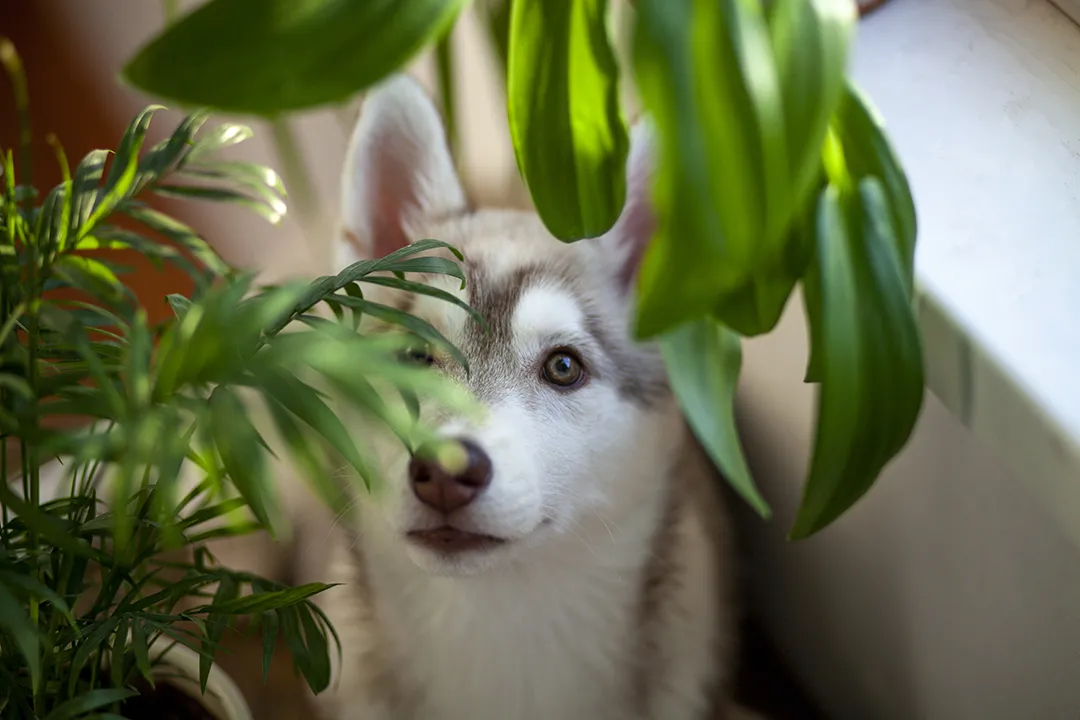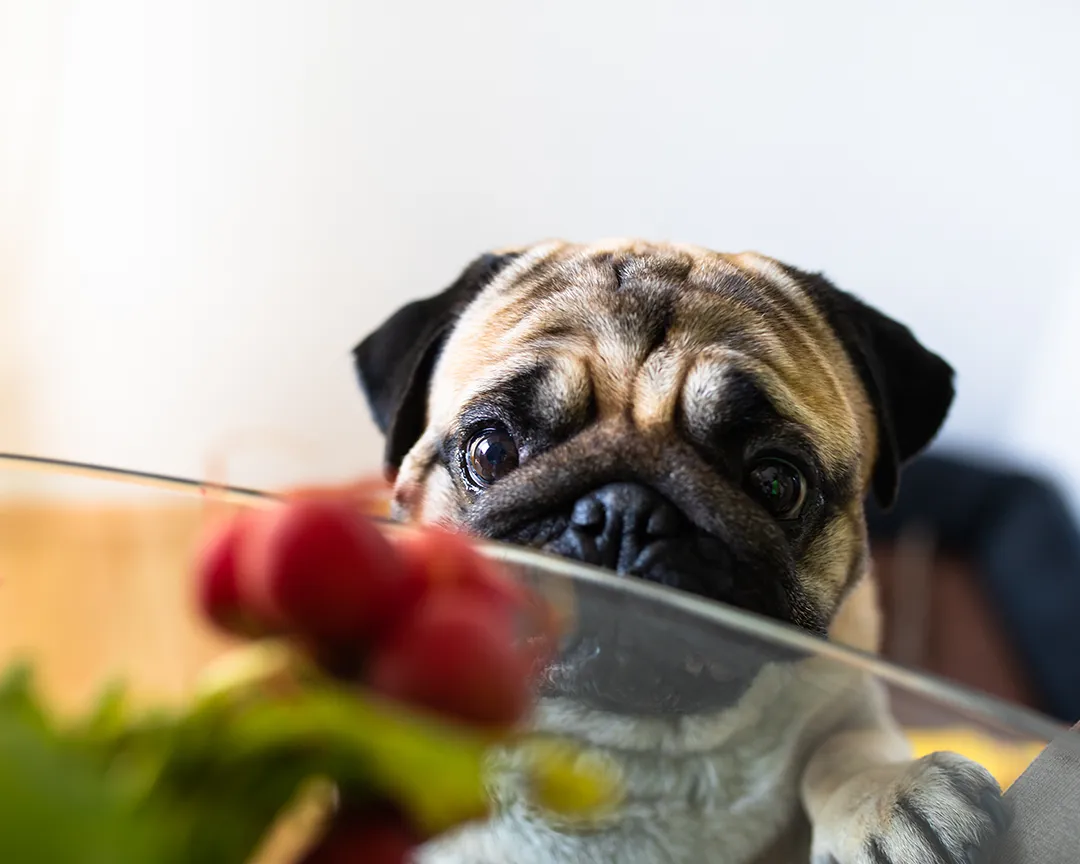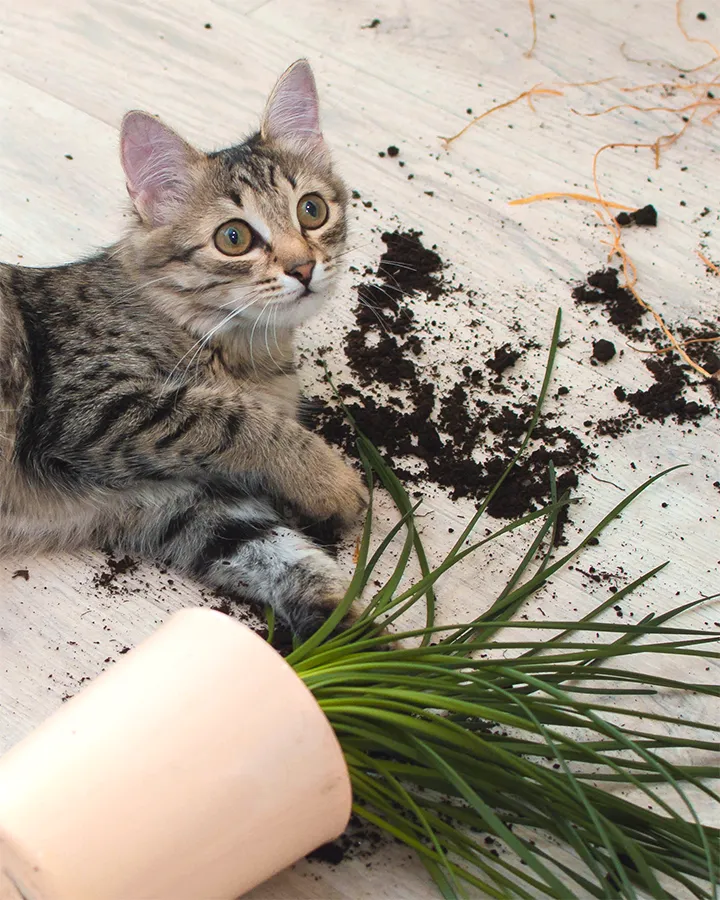
Pet friendly house plants allow us to bring the outside in, creating a safe and calming environment for both us and our pets. For many, being close to nature is calming and influences our mental state. Plants purify the air and reduce the number of harmful substances that we breathe in. They can help turn a house into a home and create a personal respite from the rest of the world. These same benefits can also be felt by our four-legged friends – providing extra enrichment and stimulation, while also reducing anxiety and stress levels.
While picking out the perfect houseplant is hard enough, finding plants safe for your pets and maintaining a safe environment can be a challenge. So how can you keep your pet safe in a house full of plants? Here are some tips we pulled together:

Tip 1: Keep all plants out of reach
What’s the best way to make sure your pet doesn’t turn your plants into a midday snack? Keep all your plants out of reach! Even if you choose pet safe plants, it’s still a good idea to keep them out of reach to avoid accidents.
It is important to note that even if a plant is nontoxic, it can still upset your pets’ stomachs. Your pet may have a sensitive stomach or just eat too much of the plant! Try using a pedestal, putting the plants on bookshelves, or hanging your plants. Low light plants are great options because they can be kept up high.
Tip 2: Consider nontraditional plants
“Top 5 easy houseplants” is probably the number one search when people decide to add plants to their home or business. Unfortunately, several of the plants on those lists are also on the list of plants that can make pets sick. That includes aloe vera, devil’s ivy, and snake plants. But never fear! There are many plants, some a little more untraditional, that are completely pet safe and look amazing. Here are some of our favorite pet friendly indoor plants:
- Air plants. These hearty plants don’t need soil!
- Succulents like haworthia, echeveria and burro’s tail.
- A Venus fly trap – yes, it’s safe!
- Hanging plants like Boston fern or Swedish ivy.
- Foliage houseplants like the polka dot plant, the Chinese money plant or a bird’s nest fern.
- Taller plants like parlor or areca palms.
- Smaller plants, perfect for bookshelves, like a prayer plant or friendship plant.
For a comprehensive list of toxic and non-toxic plants, visit the American Society for the Prevention of Cruelty to Animals (ASPCA), which offers a helpful search tool for finding pet-safe options.
Ready to Transform Your Space with Pet Friendly Plants?
At Plant Solutions, we specialize in creating green environments that are both beautiful and safe for your pets. Whether you’re looking for plant installations, rentals, or maintenance, we’ve got you covered. Let’s design a pet friendly indoor oasis together.
Tip 3: Try Growing Herbs
Growing herbs at home is our favorite way to multitask! Many herbs double as pet safe house plants while adding flavor to your cooking; they look beautiful and help elevate any home cooked meal. The safest herbs to grow at home are basil, rosemary, dill, thyme, sage, and cilantro.

Tip 4: Choose plants that are hearty and easy to grow
There are several varieties of plants that are safe for your pets and safe from your black thumb! Our favorite is the spider plant, one of the best pet friendly house plants, and it’s perfect for beginners. It’s one of the easiest plants to grow, easy to propagate and will thrive even if it’s knocked over. Another easy plant is the watermelon peperomia. It doesn’t need a ton of hydration, so its ok if you forget to water it. This beautiful plant also prefers lowlight, so it’s perfect for inside. If you want a plant that has more of a draping look, then pilea glauca, also known as baby tears, is a great choice! It lets you know when it needs to be watered and doesn’t need direct sunlight.
Tip 5: Try Wheatgrass
We’ve all seen wheatgrass shots at our favorite juice bar or health foods store, but did you know it’s good for pets too? You may have seen these containers of tall, green grass at your local pet shop. Wheatgrass is not only a great plant for humans but also an ideal pet friendly plant for your furry companions. Wheatgrass is a great addition to any pets’ diet; it can aid digestion, freshen breath, and even help with hairballs in cats! Throw it in a cute pot and voila – a plant that benefits you and your four-legged family members.
Maintaining a shared space with pet friendly indoor plants and your four-legged friends is easier than you think. It just involves a little research, planning, and some supervision. In the end everyone will be healthy, happy and safe.
While you’re here, find out more about Plant Solutions by subscribing to our newsletter and following us on Instagram, and Facebook.
Need Help Choosing Pet Friendly Plants?
Unsure which plants are safe for your pets? Our experts are here to help! Fill out the form below, and we’ll provide personalized recommendations for pet safe plants that suit your space and design needs. Let’s create a healthy, pet-friendly environment together.
